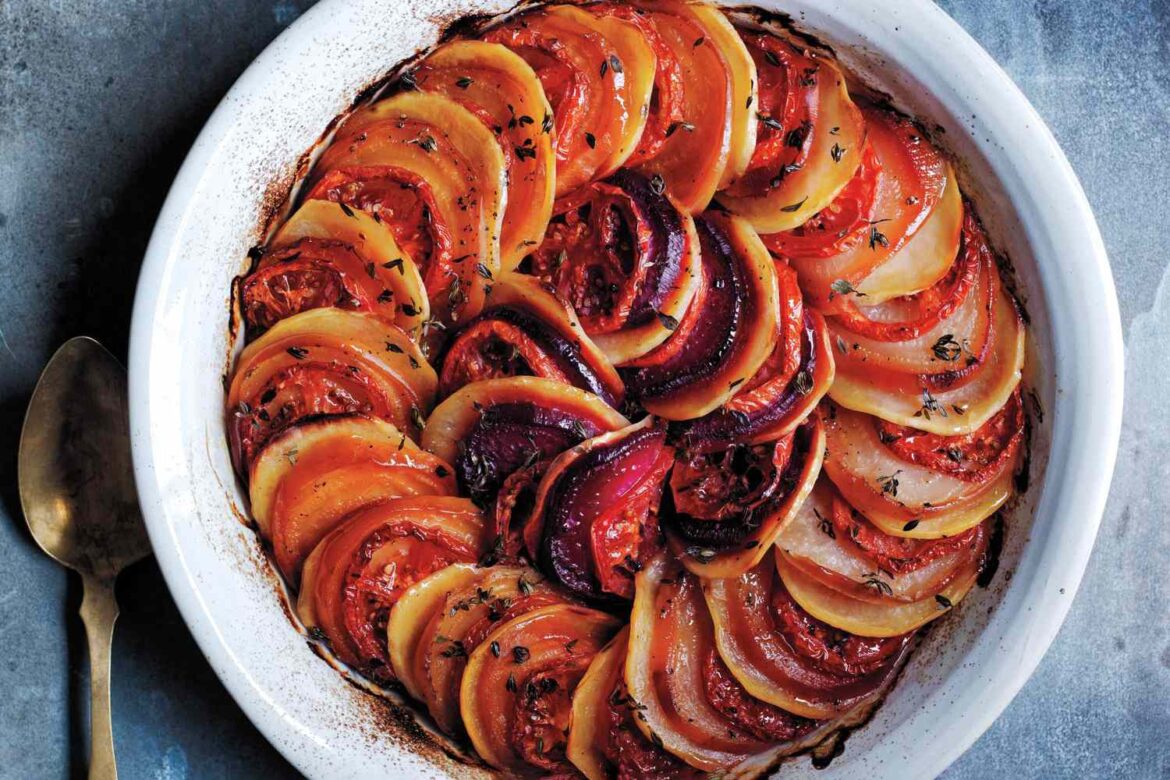Key Takeaways
A tian is a Provençal dish made by layering sliced vegetables in a shallow baking dish and baking them to tenderness.Unlike a gratin, a tian does not have a browned top or creamy ingredients like béchamel sauce.Typical ingredients include zucchini, eggplant, tomatoes, olive oil, Parmesan cheese, and optionally, cooked rice or breadcrumbs for structure.
A tian is a classic dish from Provence, France, known for its simplicity and beauty in presentation. This versatile dish involves layering sliced vegetables in a special terracotta baking vessel also called a tian. The combination of fresh ingredients and effortless preparation makes it a popular choice for both its taste and rustic charm.
What Is a Tian?
Just as we call the food we bake in a casserole dish a casserole, the shallow dish used to cook a tian gave its name to the dish itself.
The Food
Simplicity is the essence of a tian. A tian is primarily made from two to four types of sliced vegetables—think zucchini and other squash, eggplant, and tomatoes—arranged in alternating layers in a baking dish for a bold, appetizing look. Sometimes, the vegetables are cubed or shredded, so they cook into a supremely tender dish. Other integral ingredients include:
Extra virgin olive oil: Provence is home to ancient olive trees, so naturally, olive oil is essential to a tian, softening the vegetables to perfection.
Flavor enhancers: “Parmesan cheese, olive oil, and stock (chicken or fish) are other common flavorings,” says Anne Willan, award-winning culinary historian, cookbook author, teacher, and founder of the Ecole de Cuisine La Varenne in France.
Binding additions: “Cooked rice, soaked breadcrumbs, and eggs can be used to give them substance without thickening them,” she says.
Serving Do’s and Don’ts
A tian is baked and the dish is taken to the table for serving, generally while it’s still warm from the oven. In Provence and along the Mediterranean coast, dishes are often served at room temperature in the warmer months, but you would never serve a tian chilled, Willan says.
The Baking Dish Backstory
Beginning in Roman times, the rich clay in the town of Vallauris in Provence was used to make pottery. The style of cooking vessels we still recognize as uniquely Provençal were made there beginning around the 16th century. Some are deep with a single handle, some are daubes, for braises and stews, but a tian is a shallow baking dish, often round, just 3 to 4 centimeters deep, says Willan. It has a flat bottom and sides, and no lid. Most Provençal homes did not have an oven and these dishes were brought to the village baker’s wood-fired oven to cook.
These days, other types of ceramics are used for baking tians and you don’t need a tian dish from Provence to make a vegetable tian at home.
Tian Versus Gratin
A tian dish is shallower than another well-known French baking vessel, the gratin. Gratin dishes originate from the north of France, not Provence, and are typically made of enameled cast iron, a material readily available in the north, says Willan. Here’s what else separates a tian from a gratin:
The browning factor: The food cooked in a gratin is always browned on top, whereas a tian is not.
Less hearty: “A gratin is often a more substantial dish, for example including pieces of fish or chicken,” says Willan.
Pas de crème: A gratin may also have cream or béchamel sauce, but neither would be traditional in a tian, she says.
4 Delicious Tian Recipes to Try Tian Provencal With Polenta
Credit: Bryan Gardner
A hearty vegetarian tian that also works as an entrée, this variation has a layer of polenta on the bottom, a creamy foundation for slices of zucchini, tomato, eggplant, and leeks. The finishing touch: grated Gruyère cheese.
Autumn Tian
Credit: Chris Court
When you’re loaded with fall’s bounty of beets, potatoes, and onions, turn them into a tian. Thinly slice the vegetables, layer them with tomatoes, and roast the mixture until caramelized. It makes a stunning side dish.
Potato, Zucchini, and Tomato Gratin
Credit: Mikkel Vang
It may have gratin in the title, but this is essentially a tian, with tomato, zucchini, and potato layered with olive oil—and a flavorful sprinkling of cheese.
Tomato and Onion Tian
Credit: Con Poulos
Bake this tian in the late summer when tomatoes are large and juicy, and it’s cool enough to turn the oven on. You can dress it up with herbs, if desired.


Dining and Cooking